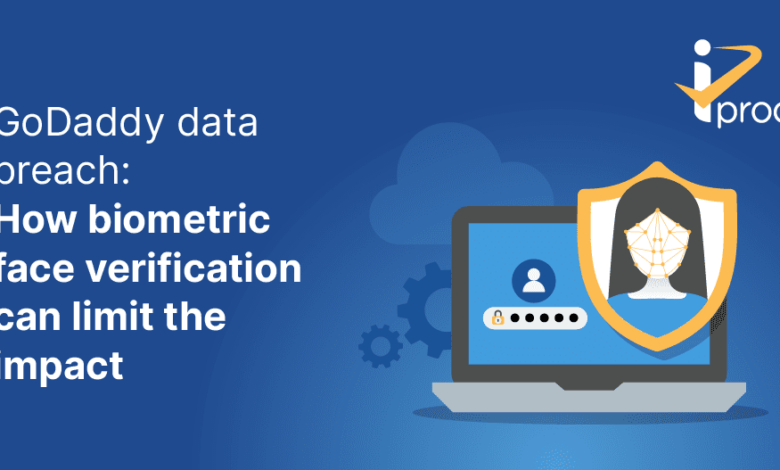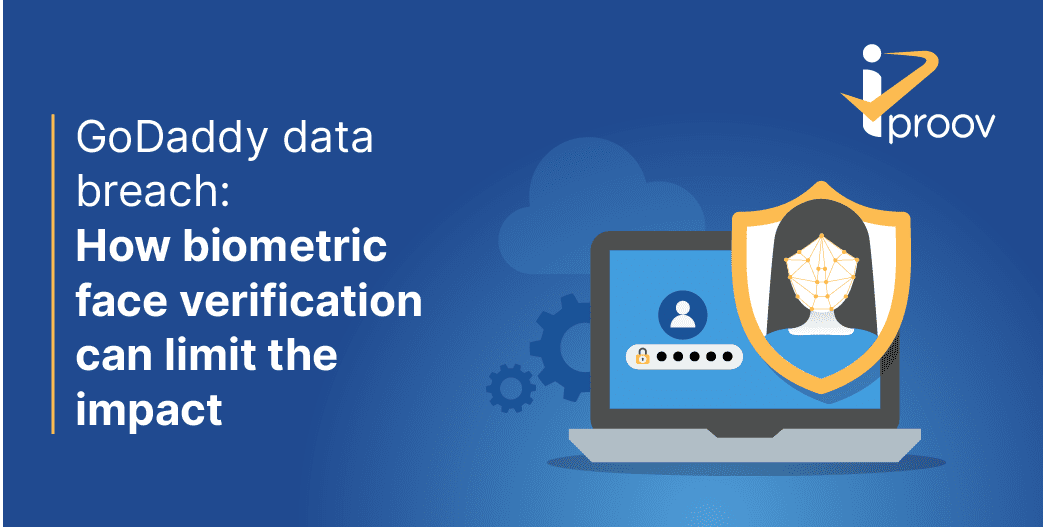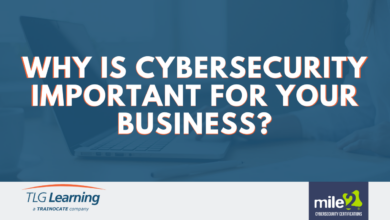
GoDaddy Data Breach Could Lead to Phishing Attacks
GoDaddy data breach could lead to phishing attacks – that’s the chilling reality facing millions. This massive security lapse exposed sensitive customer information, creating a breeding ground for sophisticated phishing scams. Imagine the potential: your email address, domain name, even contact details, now in the hands of malicious actors. This post dives deep into the fallout, exploring the risks, the responses, and – most importantly – how you can protect yourself.
The scale of the GoDaddy breach is staggering. Thousands of customers had their data compromised, including personal details and domain information. This isn’t just an inconvenience; it’s a direct threat. Phishing attacks leveraging this stolen data are already underway, targeting unsuspecting individuals and businesses. We’ll unpack the different ways this data can be used to trick you, and show you exactly how to spot and avoid these attacks.
GoDaddy Data Breach Overview

The March 2022 GoDaddy data breach was a significant security incident affecting a substantial number of its customers. This event highlighted the vulnerabilities inherent in even large, established companies and underscored the importance of robust security practices across all levels of an organization. The breach resulted in the exposure of sensitive customer information, leading to widespread concern and prompting investigations into the cause and extent of the compromise.The GoDaddy data breach spanned from late November 2021 to early March 2022.
During this period, unauthorized actors gained access to a system containing customer data. The compromised information included customer names, email addresses, and physical addresses. In some cases, partial credit card information (though not full card details including CVV numbers) and SSL private keys were also exposed. The scope was broad, impacting a significant portion of GoDaddy’s customer base.
Vulnerabilities Exploited in the GoDaddy Data Breach
The breach was attributed to a compromised Managed WordPress system, specifically the unauthorized access to a database server containing customer data. The attackers exploited a vulnerability that allowed them to gain access to this system. While GoDaddy hasn’t publicly disclosed the precise technical details of the vulnerability, the incident underscored the risks associated with outdated software, insufficient security patching, and potentially weak access controls.
The successful exploitation demonstrated a failure in GoDaddy’s security infrastructure and processes. The investigation highlighted a need for more rigorous security protocols, particularly in managing access to sensitive customer data.
Immediate Impact on GoDaddy Customers
The immediate impact on GoDaddy customers was multifaceted. The exposure of personal information, such as email addresses and physical addresses, created a significant risk of phishing attacks and identity theft. Customers whose SSL private keys were compromised faced the risk of their websites being hijacked or their online communications being intercepted. This could have led to financial losses, reputational damage, and legal repercussions for affected businesses and individuals.
The breach also damaged GoDaddy’s reputation and trust among its customers, leading to a loss of confidence in their security practices. Many customers had to take immediate steps to mitigate the risks, such as changing passwords, monitoring their accounts for suspicious activity, and revoking and reissuing SSL certificates. The incident served as a stark reminder of the potential consequences of data breaches and the importance of proactive security measures.
Phishing Attack Vectors
The GoDaddy data breach exposed a significant amount of sensitive customer information, creating a fertile ground for sophisticated phishing attacks. Criminals can leverage this stolen data in numerous ways to craft highly convincing and targeted phishing campaigns, aiming to steal further credentials, financial information, or deploy malware. Understanding the potential attack vectors is crucial for individuals and businesses to bolster their defenses.The stolen data—including email addresses, domain names, contact information, and potentially more—provides phishers with the perfect ingredients for personalized and credible-seeming attacks.
This allows them to bypass many common spam filters and increase the likelihood of successful deception.
Phishing Attack Vectors Using GoDaddy Breach Data
The following table illustrates potential phishing attack vectors stemming from the GoDaddy data breach. The examples provided are illustrative and represent the kinds of attacks likely to be seen, not specific confirmed attacks.
| Attack Vector | Target Audience | Phishing Method | Example |
|---|---|---|---|
| Domain Name Spoofing | GoDaddy customers, particularly those with compromised domain names | Creating near-identical websites to legitimate GoDaddy pages (e.g., login, account management), using the stolen domain name or a similar-looking one. | A phishing site might use a domain like “godaddy-update.com” or a visually similar domain to the legitimate GoDaddy site. The email would urge the user to update their account information immediately, linking to this fraudulent site. |
| Spear Phishing Emails | GoDaddy customers with compromised email addresses | Sending highly personalized emails that appear to come from GoDaddy, referencing specific details from the stolen data (e.g., domain name, account details). | An email might say: “Dear John Doe, We noticed unusual activity on your GoDaddy account associated with the domain ‘johndoe.com’. Please click here to verify your account immediately.” The link would lead to a fake login page. |
| Credential Stuffing Attacks | GoDaddy customers with compromised email addresses and passwords (if leaked) | Using stolen email addresses and passwords to attempt logins to various online services, including email providers, banking sites, and social media platforms. | After obtaining email addresses and passwords, attackers would use automated tools to test these credentials against numerous online services, hoping to gain access to accounts. |
| Whaling Attacks | High-profile GoDaddy customers (e.g., business owners, executives) | Highly targeted phishing campaigns designed to trick high-value targets into revealing sensitive information. These attacks often leverage information gleaned from the data breach to increase their effectiveness. | An email might appear to be from a trusted colleague or business partner, requesting urgent financial information or login credentials, leveraging the knowledge of the target’s domain name and business activities obtained through the breach. |
How Stolen Data Fuels Phishing CampaignsThe stolen data from the GoDaddy breach acts as a powerful weapon in the hands of phishers. Email addresses provide the targeting mechanism, allowing phishers to send personalized messages that bypass spam filters. Domain names allow for the creation of highly convincing phishing websites. Contact information adds further personalization and credibility. The combination of these data points significantly increases the success rate of phishing attempts.
For example, knowing a target’s domain name allows the creation of a phishing email that appears to be from a domain registrar, making the email seem far more legitimate. This makes the victim more likely to trust the link and divulge sensitive information.
Examples of Phishing Emails
Here are examples of phishing emails that could be crafted using compromised data:* Example 1 (Domain Name Spoofing): Subject: Urgent Action Required: Your GoDaddy Domain ‘yourdomain.com’ is Expiring. Body: Dear [Customer Name], Your domain ‘yourdomain.com’ is about to expire. Please renew it immediately by clicking here: [malicious link].* Example 2 (Spear Phishing): Subject: Security Alert: Unusual Login Activity on your GoDaddy Account. Body: Dear [Customer Name], We detected unusual login activity on your GoDaddy account associated with the domain [customer’s domain name].
To secure your account, please click here: [malicious link] and verify your information.
Impact on GoDaddy Customers
The GoDaddy data breach, while primarily targeting GoDaddy itself, had significant cascading effects on its customers. The compromised data, including customer information and website credentials, created a fertile ground for phishing attacks, leading to substantial financial and reputational damage for many unsuspecting users. The potential consequences extended far beyond simple inconvenience, impacting various aspects of their personal and professional lives.The most immediate and tangible impact for GoDaddy customers was the risk of significant financial losses.
Phishing attacks stemming from the data breach could have resulted in unauthorized access to bank accounts, credit card details, and other sensitive financial information. Imagine a small business owner whose online store was compromised, leading to the theft of customer payment details and subsequent chargebacks. The financial repercussions, including lost revenue, processing fees, and potential legal actions, could be devastating.
Larger companies might face even more substantial losses, particularly if they dealt with sensitive financial data like customer investment portfolios or payroll information.
Financial Losses from Phishing Attacks
Phishing attacks leveraging data from the GoDaddy breach could have resulted in a variety of financial losses for affected customers. These losses could range from relatively minor inconveniences, such as needing to replace a compromised credit card, to catastrophic events, such as the complete depletion of business accounts. The scale of the financial damage would depend heavily on the specific nature of the phishing attack, the customer’s financial situation, and their ability to quickly detect and respond to the fraudulent activity.
For instance, a successful phishing attempt leading to a fraudulent wire transfer could result in irreparable financial damage for a small business. Similarly, the theft of personal financial information could lead to identity theft and significant long-term financial repercussions.
Reputational Damage After a Phishing Attack
Beyond the direct financial losses, the reputational damage suffered by GoDaddy customers following a phishing attack could be equally, if not more, significant. For businesses, a data breach and subsequent phishing attack can severely damage their credibility and trust with customers and partners. This damage could manifest in lost sales, difficulty attracting new clients, and a decline in overall brand value.
Imagine a reputable law firm whose client data is compromised due to a phishing attack originating from the GoDaddy breach; the resulting loss of client trust could be devastating to their business. For individuals, the reputational damage might be less directly quantifiable but equally damaging, potentially affecting their ability to secure loans, employment, or even insurance.
Legal Ramifications for Victims of Phishing Attacks
The legal ramifications for GoDaddy customers who fell victim to phishing attacks following the data breach are complex and varied. Customers could find themselves facing lawsuits from clients, business partners, or even regulatory bodies, depending on the nature of the data compromised and the extent of the damage. Additionally, customers might face legal battles to recover stolen funds or repair their damaged credit.
The legal costs associated with defending against such lawsuits, and the potential for significant financial penalties, add another layer of burden to the already difficult situation. Furthermore, the legal process itself can be time-consuming and stressful, adding to the overall negative impact of the breach.
GoDaddy’s Response and Mitigation
GoDaddy’s response to the March 2022 data breach, which exposed customer data including private keys and SSL certificates, was met with a mixed reception. While they acknowledged the breach relatively quickly, the timeline of their response and the information they provided to customers drew considerable criticism. The company’s actions, or lack thereof, in the immediate aftermath, raised concerns about their security protocols and communication strategies.GoDaddy’s initial response involved investigating the breach and notifying affected customers.
They also claimed to have implemented security measures to prevent further attacks. However, the specifics of these measures were initially vague, leading to further distrust among users. The company faced significant backlash for the length of time it took to fully understand the extent of the compromise and for the perceived lack of transparency throughout the process.
The slow and piecemeal release of information amplified the negative impact on their reputation and customer confidence.
GoDaddy’s Actions Following the Breach
GoDaddy stated they took several actions to mitigate the damage and prevent further breaches. These included resetting compromised customer passwords, investigating the root cause of the breach, and implementing additional security measures. While they did eventually offer credit monitoring services to affected customers, the initial lack of proactive communication and the delay in implementing these measures left many feeling neglected and vulnerable.
The GoDaddy data breach is a serious wake-up call; stolen customer data makes phishing attacks far more likely. This highlights the urgent need for robust cloud security, which is why I’ve been researching solutions like bitglass and the rise of cloud security posture management , to help organizations better protect themselves. Ultimately, stronger cloud security is our best defense against the fallout from incidents like the GoDaddy breach and the resulting wave of phishing attempts.
For instance, the fact that the breach involved access to private keys meant that malicious actors could have potentially created fraudulent SSL certificates, leading to further phishing and man-in-the-middle attacks. The company’s response needed to address this critical vulnerability more aggressively and promptly.
Effectiveness of GoDaddy’s Mitigation Efforts
The effectiveness of GoDaddy’s mitigation efforts is debatable. While they ultimately took steps to address the immediate consequences, the delayed response and the initial lack of transparency significantly hampered their efforts. The breach allowed attackers extended access to sensitive customer data, potentially enabling them to launch further phishing campaigns and other malicious activities long after the initial intrusion was discovered.
The damage caused by this extended period of vulnerability could have been significantly reduced with a more rapid and decisive response. A swift and comprehensive communication strategy, detailing the exact nature of the compromise and the steps being taken to address it, would have helped mitigate the negative impact and build customer trust. The failure to adequately address the vulnerability surrounding private keys is a significant example of insufficient mitigation.
A Hypothetical Improved Response Plan
An improved response plan for GoDaddy should prioritize speed, transparency, and proactive communication. This would involve establishing a dedicated incident response team with clearly defined roles and responsibilities. A comprehensive incident response plan should be regularly tested and updated to reflect the evolving threat landscape. This plan would Artikel specific procedures for detecting, containing, and remediating security breaches.
Furthermore, GoDaddy should invest in advanced threat detection systems and implement robust security monitoring capabilities to detect and respond to intrusions in real-time. Improved employee security training and stronger access control measures would also help prevent future breaches. Finally, a clear communication protocol should be established to ensure that customers are promptly and transparently informed about any security incidents, including the nature of the breach, the potential impact on customers, and the steps being taken to address the situation.
This proactive and transparent approach would foster trust and minimize the negative consequences of future security breaches. A robust public relations strategy to manage the narrative and address customer concerns would also be crucial. Taking lessons from similar breaches suffered by other companies, like Equifax, GoDaddy could have significantly improved its response by focusing on proactive prevention, rapid response, and open communication.
Customer Safeguards and Best Practices

The GoDaddy data breach highlights the critical need for proactive security measures to protect yourself from phishing attacks. Even with GoDaddy’s response, individual vigilance remains crucial in minimizing your risk. By implementing strong security practices, you can significantly reduce the likelihood of falling victim to phishing scams targeting your accounts. This section Artikels essential steps to safeguard your information.
Following a data breach, it’s imperative to review and strengthen your online security practices. This includes being extra cautious with emails, links, and attachments, and regularly updating your passwords and security software. Proactive steps are more effective than reactive measures.
Best Practices for Preventing Phishing Attacks
The following best practices are essential for mitigating the risk of phishing attacks, especially in the wake of a large-scale data breach like the one experienced by GoDaddy.
The GoDaddy data breach is a serious concern, potentially fueling a wave of sophisticated phishing attacks. Building secure applications is crucial now more than ever, and that’s where understanding the capabilities of domino app dev the low code and pro code future comes in. Developing robust, secure apps can help mitigate the risks posed by this kind of data leak, protecting users from falling prey to phishing scams.
We really need to be proactive about security in the face of these breaches.
- Verify sender identities: Carefully examine the sender’s email address for inconsistencies. Legitimate companies rarely use free email services like Gmail or Yahoo for official communications. Hover over links before clicking to see the actual URL – phishing emails often mask malicious links.
- Be wary of urgent requests: Phishing emails often create a sense of urgency, pressuring you to act quickly without thinking. Legitimate businesses rarely demand immediate action.
- Never click links or open attachments from unknown senders: If you’re unsure about the legitimacy of an email, do not interact with it. Contact the company directly through official channels to verify the communication.
- Regularly update passwords and enable two-factor authentication (2FA): Use strong, unique passwords for all your online accounts. 2FA adds an extra layer of security, making it significantly harder for attackers to access your accounts even if they obtain your password.
- Install and maintain robust anti-virus and anti-malware software: Keep your software updated to protect against the latest threats. Regularly scan your computer for malware.
- Be cautious of unexpected emails or communications: If you receive an email or communication that seems out of the ordinary, exercise caution. Contact the company directly to confirm its legitimacy.
- Report suspicious emails: If you receive a phishing email, report it to the appropriate authorities and the company it is impersonating. Many email providers have built-in reporting mechanisms.
Multi-Factor Authentication (MFA) as a Mitigation Strategy
Multi-factor authentication (MFA) adds a crucial layer of security to your online accounts. Even if an attacker obtains your password, they will still need access to your second factor of authentication (e.g., a code from your phone, a security key) to log in. This significantly reduces the risk of unauthorized access, even if your credentials are compromised in a data breach.
For example, if you use MFA with an authenticator app on your smartphone, even if someone obtains your GoDaddy password, they will be unable to access your account without the unique code generated by the app on your phone. This makes your account significantly more secure.
Identifying and Reporting Phishing Emails
Identifying and reporting phishing emails is crucial for protecting yourself and others. Careful examination of emails, combined with prompt reporting, can help disrupt phishing campaigns.
- Look for grammatical errors and inconsistencies: Phishing emails often contain spelling and grammatical errors, and may not use the correct company branding or logos.
- Check the sender’s email address: Legitimate companies use professional email addresses, usually matching their domain name. Suspicious addresses often contain misspellings or use free email services.
- Examine links carefully: Hover over links before clicking to reveal the actual URL. Phishing links often mask malicious websites.
- Report suspicious emails to your email provider: Most email providers offer a way to report phishing emails. Use this feature to help protect others from similar attacks.
- Report the phishing attempt to the company being impersonated: Contact the company directly through their official website or other verified channels to alert them of the fraudulent activity.
The Role of Cybersecurity Awareness: Godaddy Data Breach Could Lead To Phishing Attacks
The GoDaddy data breach highlighted the critical need for robust cybersecurity awareness training, not just for GoDaddy’s employees, but for its millions of customers as well. A lack of awareness can leave individuals vulnerable to phishing attacks and other cyber threats, turning a data breach into a widespread cascade of compromised accounts and sensitive information. This underscores the importance of proactive training and education to bolster individual resilience against such attacks.Cybersecurity awareness training is essential for both GoDaddy customers and employees to mitigate the risks associated with data breaches and phishing attacks.
For customers, it equips them with the knowledge and skills to identify and avoid malicious emails, websites, and other online threats. For GoDaddy employees, comprehensive training strengthens their ability to protect company data and systems, reducing the likelihood of internal breaches that could compromise customer information. This dual approach creates a layered defense against cyber threats, minimizing vulnerabilities at both individual and organizational levels.
Cybersecurity Awareness Training Module
A comprehensive cybersecurity awareness training module should cover several key areas. The module would begin with an overview of common cyber threats, including phishing, malware, and social engineering tactics. This foundational knowledge would be followed by practical exercises demonstrating how to identify and avoid these threats. For instance, participants would analyze sample phishing emails to identify red flags like suspicious links, grammatical errors, and urgent requests for personal information.
The module would also cover secure password practices, the importance of multi-factor authentication, and best practices for protecting personal data online. Finally, the module would incorporate a simulated phishing attack to assess participants’ understanding and ability to apply what they’ve learned. Regular refresher training would reinforce these key concepts and adapt to evolving cyber threats.
Phishing Simulation Effectiveness
Phishing simulations are invaluable tools for enhancing user awareness and improving their ability to identify and respond to real-world phishing attacks. These simulations involve sending controlled phishing emails to employees or customers, mimicking real-world attacks. The effectiveness of these simulations is measured by tracking the click-through rate – the percentage of recipients who click on the malicious link – and the reporting rate – the percentage of recipients who report the suspicious email.
A high click-through rate indicates a need for more comprehensive training, while a low reporting rate suggests a lack of awareness regarding suspicious emails. For example, a simulation might involve a phishing email appearing to be from GoDaddy, requesting users to update their account information by clicking on a link. Analysis of the results allows for targeted improvements in the training program, addressing specific weaknesses identified in the simulation.
This iterative process ensures the training remains relevant and effective in protecting against the latest phishing tactics.
Long-Term Implications
The GoDaddy data breach, while seemingly contained, casts a long shadow over the company’s future and the broader domain registration industry. The immediate fallout involved compromised customer data and the risk of phishing attacks, but the longer-term consequences are far-reaching and will likely shape the digital landscape for years to come. Rebuilding trust and mitigating the ongoing vulnerabilities will be a significant challenge requiring sustained effort and significant investment.The erosion of trust in GoDaddy is perhaps the most significant long-term implication.
Customers, especially those who rely on GoDaddy for critical online infrastructure, may now be hesitant to continue using its services. This loss of confidence could translate into a decline in market share as businesses and individuals seek alternative providers perceived as more secure. The impact will be felt disproportionately by smaller businesses and individuals who may lack the resources to easily switch providers, forcing them to weigh the risks of staying with GoDaddy against the costs of migrating.
This hesitancy could extend beyond just domain registration, potentially impacting their other services like web hosting and email.
Impact on Customer Loyalty and Future Business, Godaddy data breach could lead to phishing attacks
The breach’s effect on customer loyalty will likely be felt for an extended period. Even with GoDaddy’s remediation efforts, the lingering fear of future breaches or data misuse will likely drive some customers to seek alternative providers. This exodus could result in a significant loss of revenue for GoDaddy, requiring substantial investment in security upgrades and customer reassurance initiatives to regain lost ground.
For example, a similar situation with Yahoo! Mail after its massive data breaches resulted in a long-term decline in user trust and market share, despite significant efforts to improve security. GoDaddy needs to demonstrate a clear and sustained commitment to robust security practices to win back customer confidence.
Increased Risk of Future Cyberattacks
The GoDaddy breach serves as a prime example for malicious actors. The success of this attack highlights vulnerabilities within the domain registration industry and could inspire similar attacks targeting GoDaddy or its customers. Attackers might attempt to exploit the lingering vulnerabilities or leverage the compromised data to launch more sophisticated phishing campaigns. For instance, they could use stolen information to create highly targeted phishing emails that appear legitimate to GoDaddy customers, leading to further data breaches or financial losses.
The need for continuous vigilance and proactive security measures is paramount, not only for GoDaddy but also for its customers.
Implications for the Domain Registration Industry
The GoDaddy breach underscores systemic vulnerabilities within the domain registration industry as a whole. The incident raises concerns about the security practices of other registrars and the need for industry-wide improvements in data protection and security protocols. This could lead to increased regulatory scrutiny and the implementation of stricter standards and compliance requirements. This could also prompt the development of new security technologies and practices to better protect user data and prevent future breaches.
The GoDaddy data breach is a serious issue, potentially fueling a wave of phishing attacks. Criminals could use stolen data to craft incredibly convincing scams, especially considering how easily people fall prey to deceptive tactics. For example, we’ve seen reports of Facebook asking for bank account info and card transactions of users, as detailed in this article: facebook asking bank account info and card transactions of users.
This highlights how easily personal financial data can be compromised, making the GoDaddy breach even more concerning and increasing the likelihood of successful phishing attempts.
The long-term outcome might be a more secure, but potentially more costly, domain registration landscape.
Ultimate Conclusion
The GoDaddy data breach serves as a stark reminder of the ever-present threat of cybercrime. While GoDaddy has taken steps to mitigate the damage, the responsibility for protecting yourself ultimately rests with you. Staying vigilant, implementing strong security practices, and being aware of the tactics used in phishing attacks are crucial. By understanding the risks and taking proactive measures, you can significantly reduce your vulnerability and safeguard your online presence.
Don’t let this breach be your downfall – learn from it and protect yourself.
Answers to Common Questions
What types of data were compromised in the GoDaddy breach?
Reports indicate a range of data was compromised, including email addresses, domain names, and potentially other personal information depending on the specific customer account.
How can I tell if I’ve been targeted by a phishing attack related to the GoDaddy breach?
Be wary of emails requesting sensitive information, especially login credentials or payment details. Check the sender’s email address carefully and look for any inconsistencies or suspicious links.
What should I do if I suspect I’ve fallen victim to a phishing attack?
Immediately change your passwords, contact GoDaddy support, and report the incident to the appropriate authorities. Monitor your accounts closely for any unusual activity.
Is GoDaddy liable for the damages caused by phishing attacks stemming from the breach?
This is a complex legal question and depends on the specifics of the situation and applicable laws. It’s advisable to consult with a legal professional if you’ve suffered damages.





